What Are Girdling Roots?
The roots of a tree are vital to the health and appearance of that tree. Roots provide nutrients, water, stability, and more to keep trees alive and healthy, and any issues that negatively affect roots, in turn, affect trees. Girdling roots is one of the most common issues that trees in urban environments run into and can be a serious problem if left untreated. Below we discuss what root girdling is, what the signs are, and what you can do.
What Are Girdling Roots?
Girdling roots occur when the tree roots circle and coil around the base of the trunk rather than spreading outwards. Think about the effect of wearing a belt that is too tight around your waist and you get the idea of what tree roots do when girdled. Girdling restricts the flow of water and nutrients to the tree, making the tree weaker and more unstable. While maple and linden trees seem the most susceptible, girdling can happen to nearly any tree.
What Causes Root Girdling?
Girdling roots are a common problem for trees in urban environments due to the factors those trees face that trees in nature avoid and those issues are related to a lack of space for proper root growth. Improper planting or transplanting is a significant cause of root girdling. If a tree is in a container or burlap for too long, the roots will eventually circle the trunk or container. If those roots are also not loosened during the planting process, the roots become girdled.
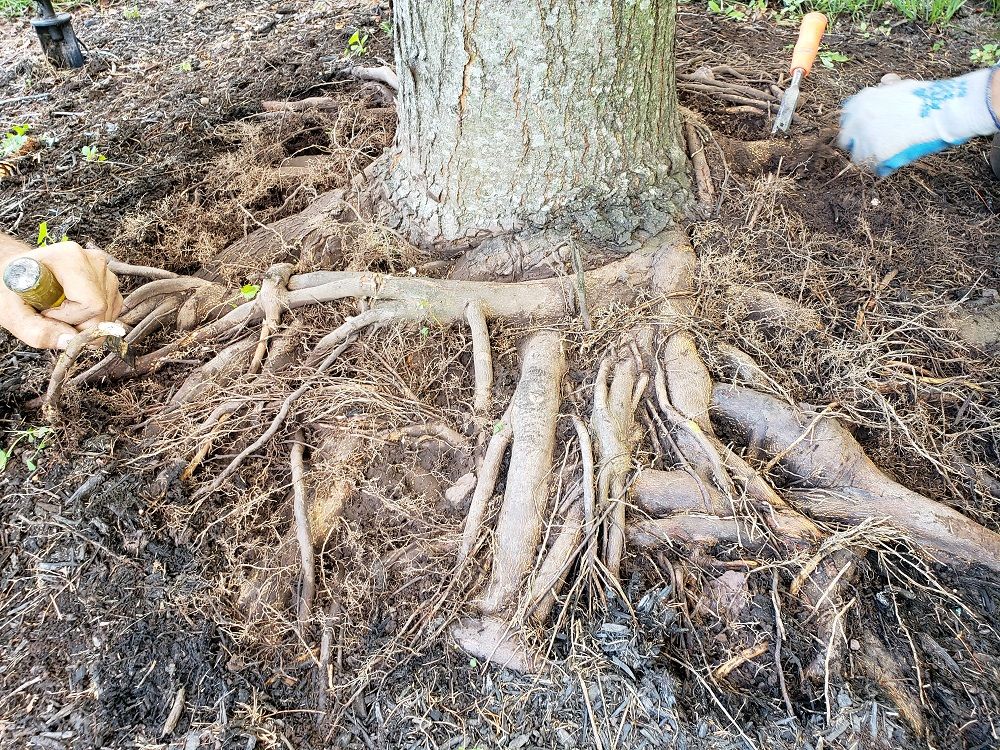
Poor Planting Practices
The same issue can occur when a tree is planted in a hole that is too small: the roots have nowhere to spread and need to encircle the tree to maintain growth, which leads to girdling roots. Pieces of the planting container or other debris in the planting hole can also cause girdling. Heavily compacted soil and proximity to foundations, curbs, and other obstructions (which can hinder root growth) are common causes for root girdling. So because the issue is happening to the roots, you might think that spotting signs of root girdling could be difficult.
Compacted Soil
Soil compaction occurs when excessive pressure is applied to the soil surface, causing the soil particles to press together, reducing pore space and increasing soil density. Wet soil is particularly vulnerable to compaction and compacted soil can negatively affect plant growth and root development. The reduced pore space restricts the movement of air, water, and nutrients within the soil, so plant roots have a more difficult time penetrating and accessing essential resources
Signs of Root Girdling
Spotting root girdling is relatively easy, as plenty of signs can indicate that a tree has girdled roots. The most obvious sign is an abnormal trunk flare. A tree trunk typically flares out and widens at the ground, but if a tree has girdled roots, the trunk may appear straight or narrow, looking more similar to a telephone pole than a tree. Roots circling above the soil line may also indicate girdling, as can sunscald or frost cracks visible on the trunk.
Because girdling roots prevent trees from getting enough water and nutrients, other possible signs include the following:
- Thin or sparse canopy
- Die-back in the upper tree canopy
- Wilting, scorched, off-colored (yellow), or smaller than average leaves
- Early fall color and leaf drop
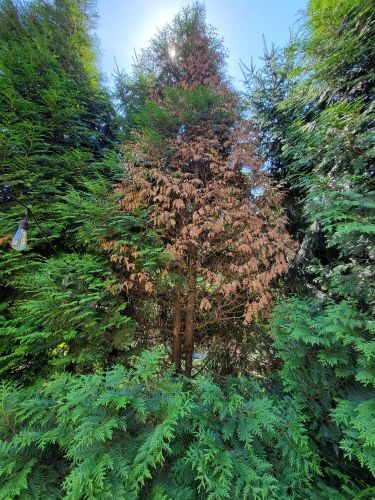
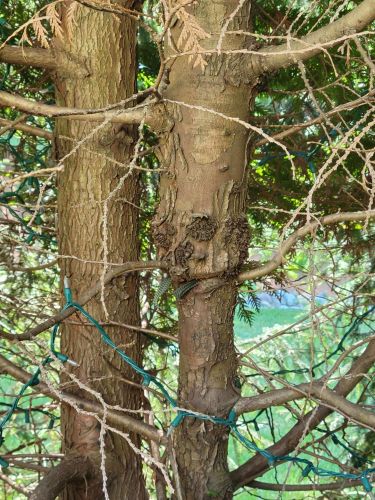
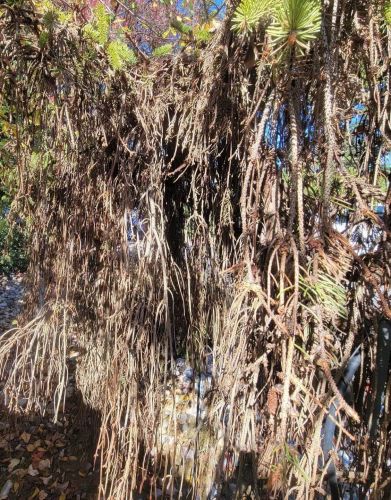
What You Can Do About Girdling Roots
The best solution for treating root girdling in your trees is to contact a landscape professional. Girdled roots can be removed, but removing them yourself may cause damage to the main stem. An experienced plant health care professional or certified arborist will know the proper technique to minimize damage. In severe cases, girdling compromises a tree’s stability, and as a result, the tree may need to be removed. Preventing root girdling involves knowing the best planting methods, from digging the right sized hole to knowing where to mulch, all of which plant health care professionals know.
Girdling From Cables or Straps
Other types of girdling can harm trees as well. This ornamental Spruce is dead from a nylon cord that was used to stake the tree in place after planting. Any cords, wires or ropes should be removed when they are no longer necessary and before they girdle and kill the plant.
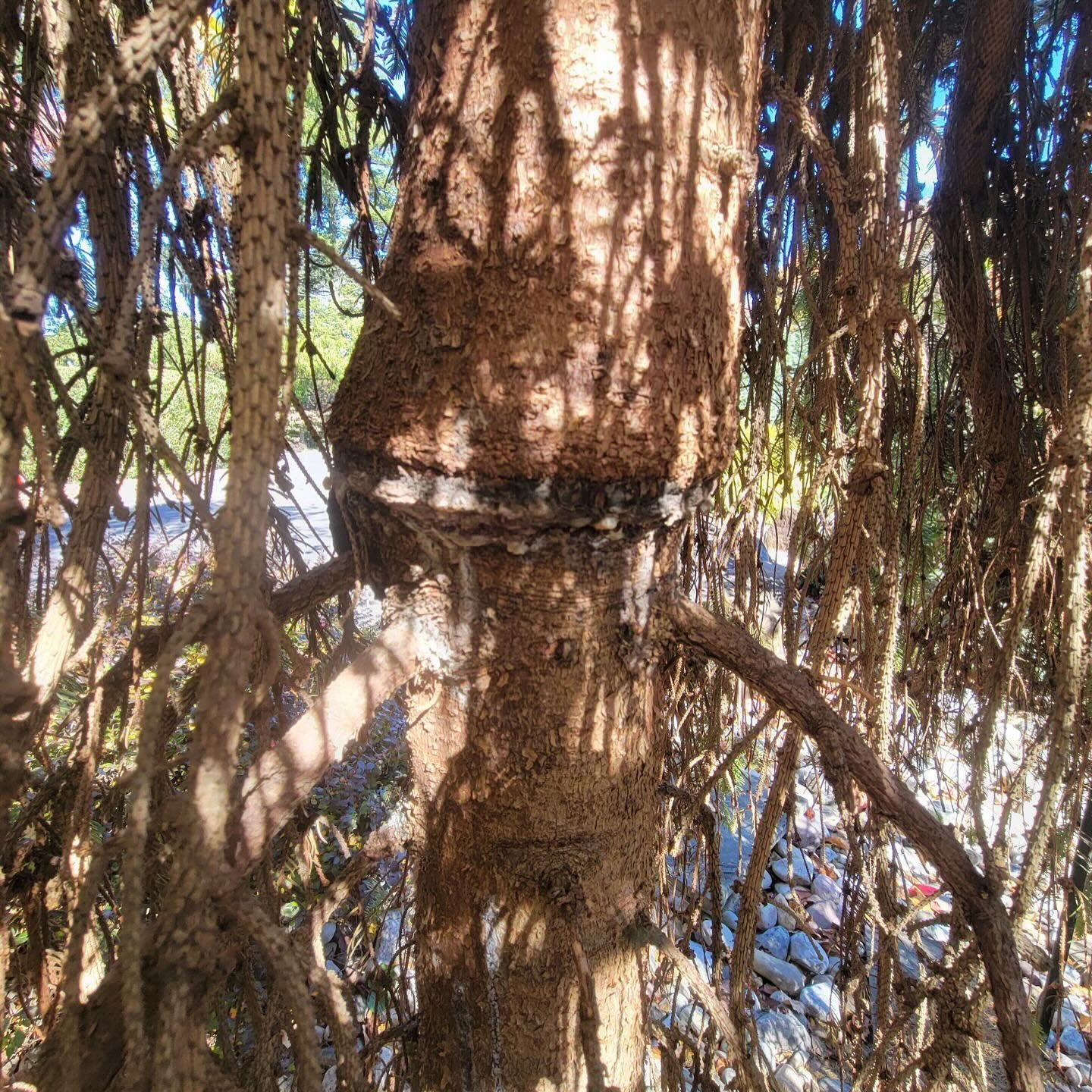
Contact Burkholder PHC for Expert Plant Health Care
If you want to keep your trees healthy and prevent solve issues like girdling roots, contact Burkholder PHC. We offer many plant health care services, from pest control to deer deterrents to soil and tree care. Our passionate team of plant health specialists has years of experience maintaining the health and vibrancy of homeowners’ plants in the Main Line area. For more information about our services, request a free consultation today.

